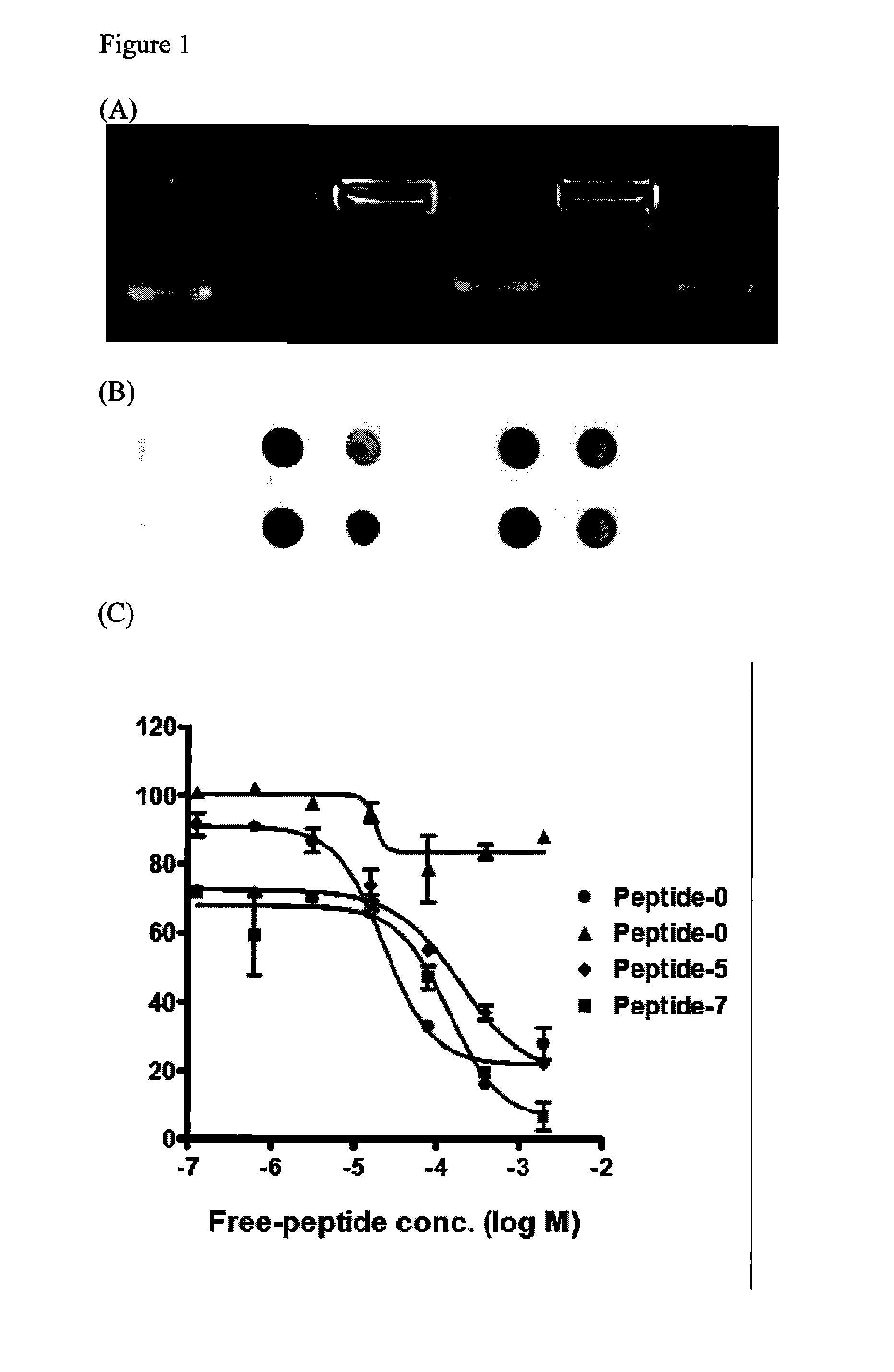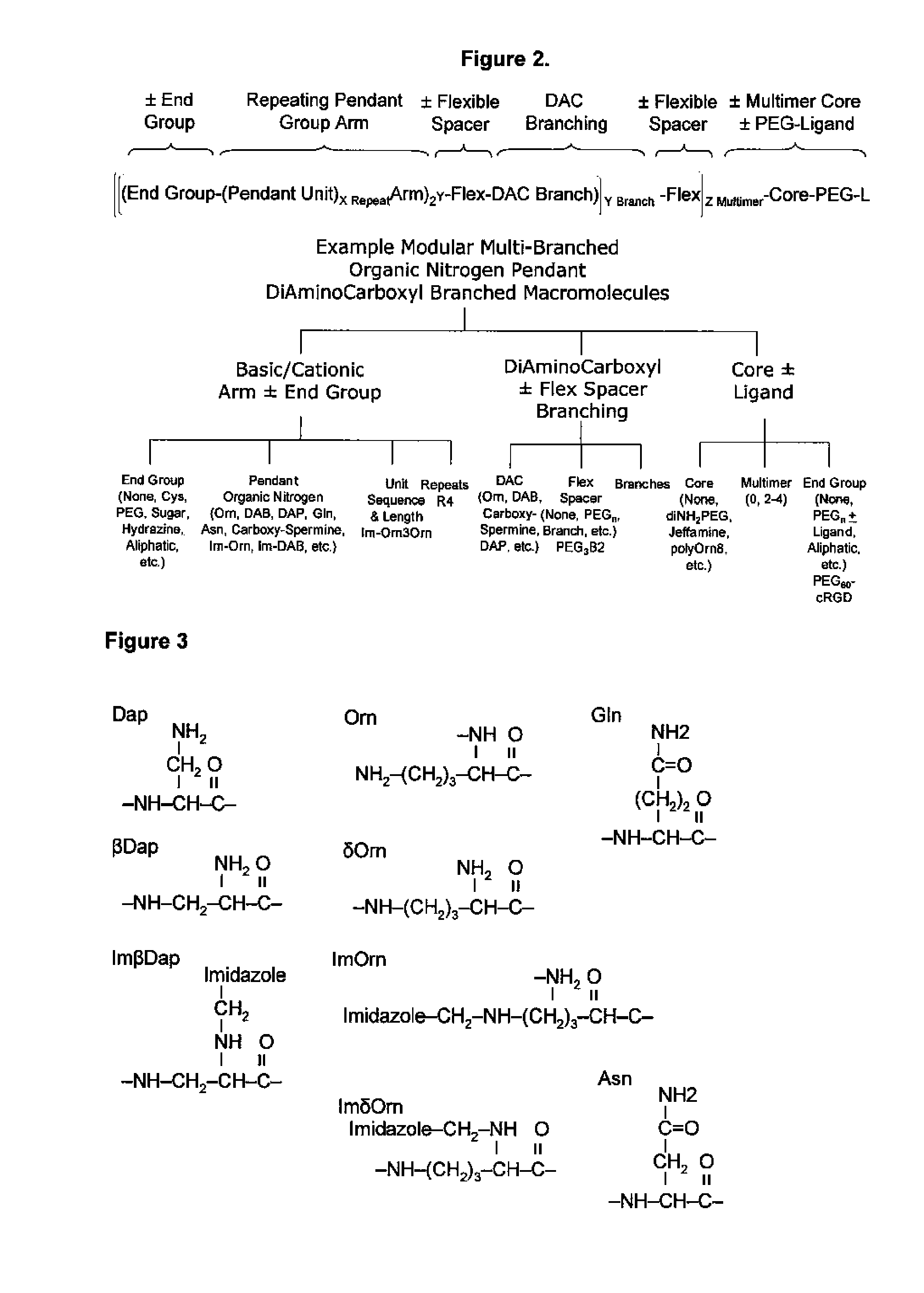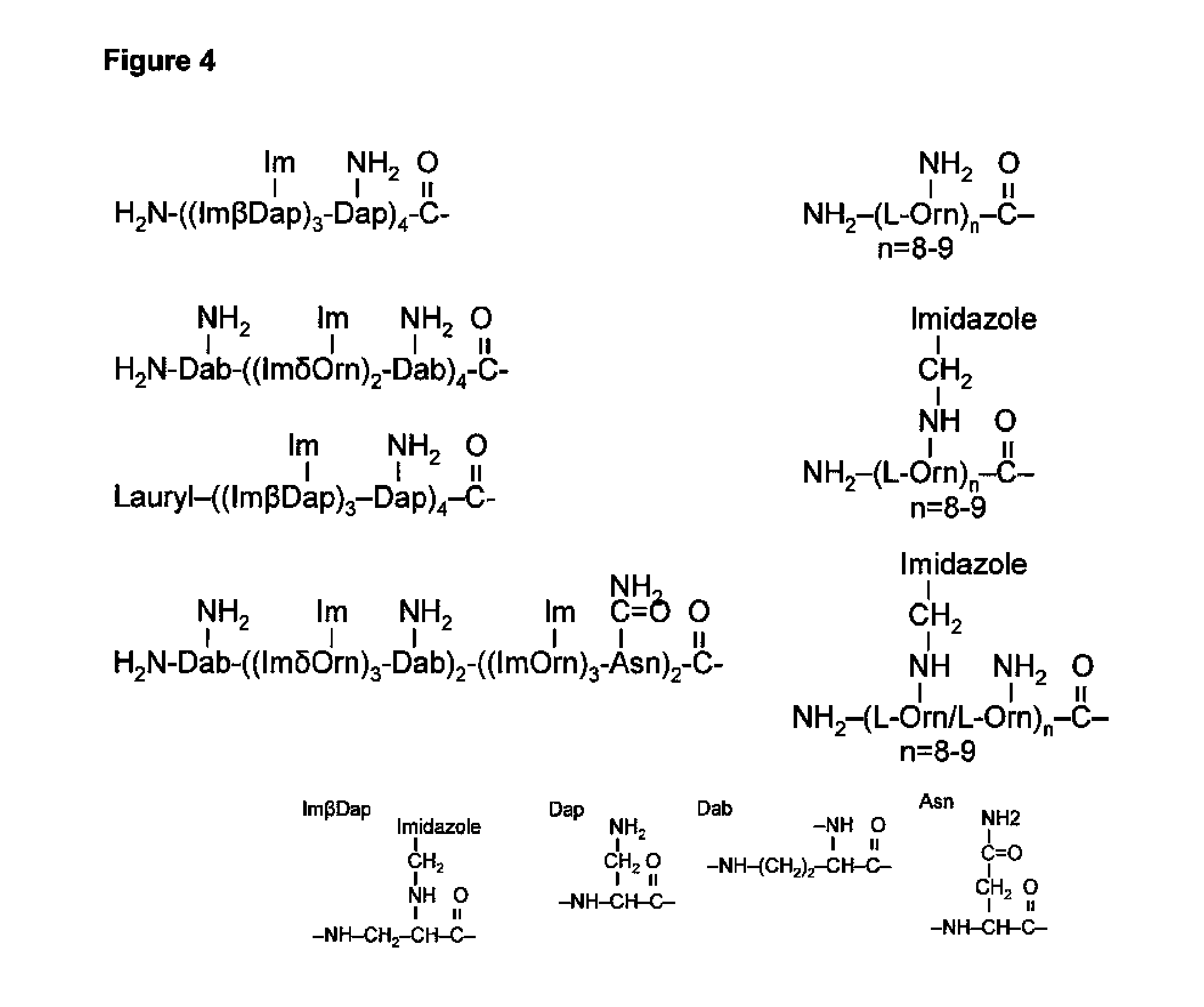Engineered tunable nanoparticles for delivery of therapeutics, diagnostics, and experimental compounds and related compositions for therapeutic use
- Summary
- Abstract
- Description
- Claims
- Application Information
AI Technical Summary
Benefits of technology
Problems solved by technology
Method used
Image
Examples
example 1
Antibody Binding Peptide Conjugate: Synthesis of an Antibody Fc Binding Peptide and its Conjugate with PEG
[0183]Synthesis is performed of an antibody Fc binding peptide, H(Trt)W(Boc)R(Pbf)G-W(Boc)VA, where all the side chains retained protection groups but the C-terminal carboxyl group is not protected, by solid phase peptide synthesis using the Fmoc chemistry and side chain protecting groups retained by mild cleavage conditions, provided by a commercial custom peptide supplier. The carboxylic acid functional group is used for coupling to an amino-PEG-carboxyl by solution phase DCC mediated coupling.
[0184]The protected peptide (50 mg) is dissolved in ethyl acetate (5 ml) and cooled in ice bath. To the above solution, 6.7 mg (1.1 molar equivalent) of DCC (dicyclohexylcarbodiimide) is added and stirred. To the above mixture 3.7 mg of N-hydroxysuccinimide is added and continued stirring for 3 hours. AT the end of 3 hours, the precipitate is filtered off and 100 mg (1 molar equivalent) ...
example 2
Synthesis of a Branched Cationic Polymer with Pendant Imidazole Moieties Comprising Protective Polymer PEG and Targeting Ligand RGD Peptide
[0203]a) Synthesis of a Core Consisting of Ornithine and Ornithine Branch:
[0204]Synthesis of the core and branches is carried out by standard solid phase peptide synthesis method. Synthesis starts with peptide synthesis resin coupled with cysteine at low density. Cysteine at the C-terminal will allow conjugation of protective polymer and ligand through the —SH group at the cysteine side chain. To this cysteine, an ornithine is coupled using the alpha and delta amine protected (with Fmoc) derivative of ornithine. This ornithine will act as the core to which additional coupling can be carried out. An ornithine core will provide a branching point allowing coupling to its two amino groups. After the first step of coupling, Fmoc protecting groups is removed by base cleavage. In the next step, another cycle of coupling followed by deprotection is carri...
example 3
Synthesis of Branched Cationic Polymer with Polyethyleneimine Core and Cationic Arms Consisting of Pendent Imidazole Groups and Protective Polymer and Targeting Ligand
[0218]To synthesize the branched polymer consisting of polyethyleneimine core and imidazole containing arms, polyornithineithine with side chain derivatized with imidazole is coupled to polyethyleneimine as follows.
[0219]a) Synthesis of Ornithine Arms:
[0220]The peptide containing the amino acid sequence, (Ornithine)18, is synthesized by solid phase peptide synthesis using the Fmoc chemistry. Rink acid resin or 2-chlorotrityl chloride resin which are amenable to mild acid cleavage of the peptide is used as the solid support for synthesis. Boc protecting groups are used to protect amino side chain of ornithine. At the final coupling step an ornithine protected with Boc at both alpha and epsilon amino groups are coupled. This fully protected peptide is cleaved from the resin 1% TFA in DCM as follows. The peptide containin...
PUM
| Property | Measurement | Unit |
|---|---|---|
| Fraction | aaaaa | aaaaa |
| Fraction | aaaaa | aaaaa |
| Fraction | aaaaa | aaaaa |
Abstract
Description
Claims
Application Information
 Login to View More
Login to View More - R&D
- Intellectual Property
- Life Sciences
- Materials
- Tech Scout
- Unparalleled Data Quality
- Higher Quality Content
- 60% Fewer Hallucinations
Browse by: Latest US Patents, China's latest patents, Technical Efficacy Thesaurus, Application Domain, Technology Topic, Popular Technical Reports.
© 2025 PatSnap. All rights reserved.Legal|Privacy policy|Modern Slavery Act Transparency Statement|Sitemap|About US| Contact US: help@patsnap.com



